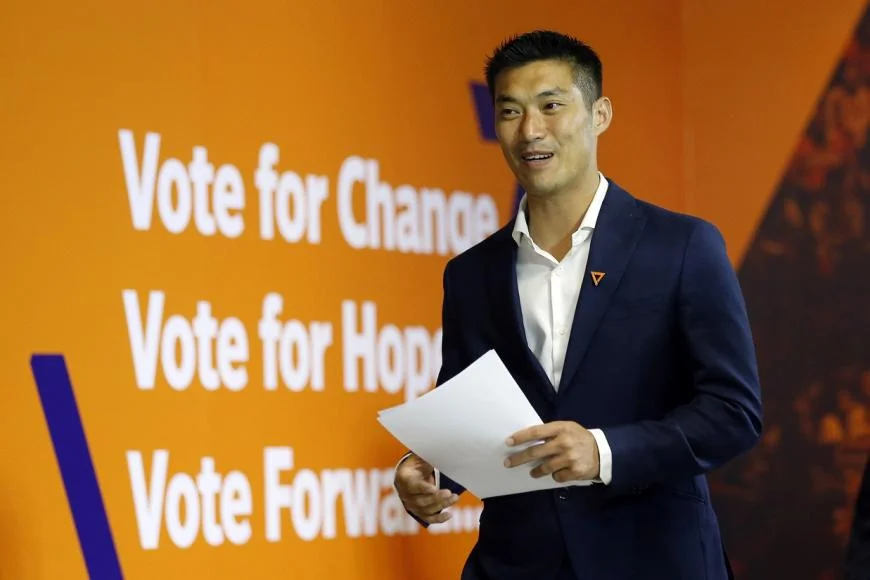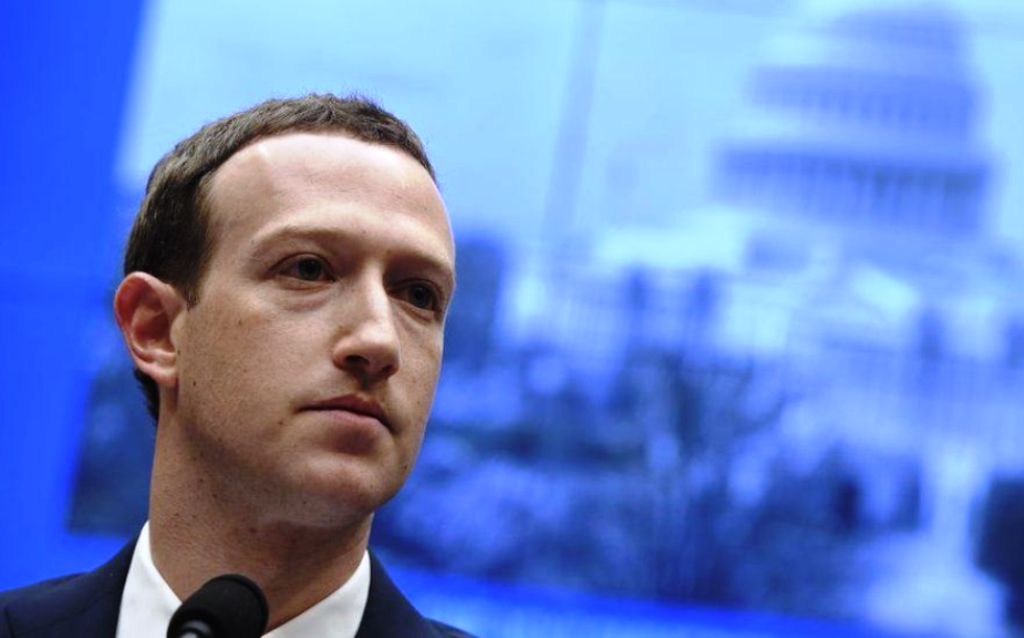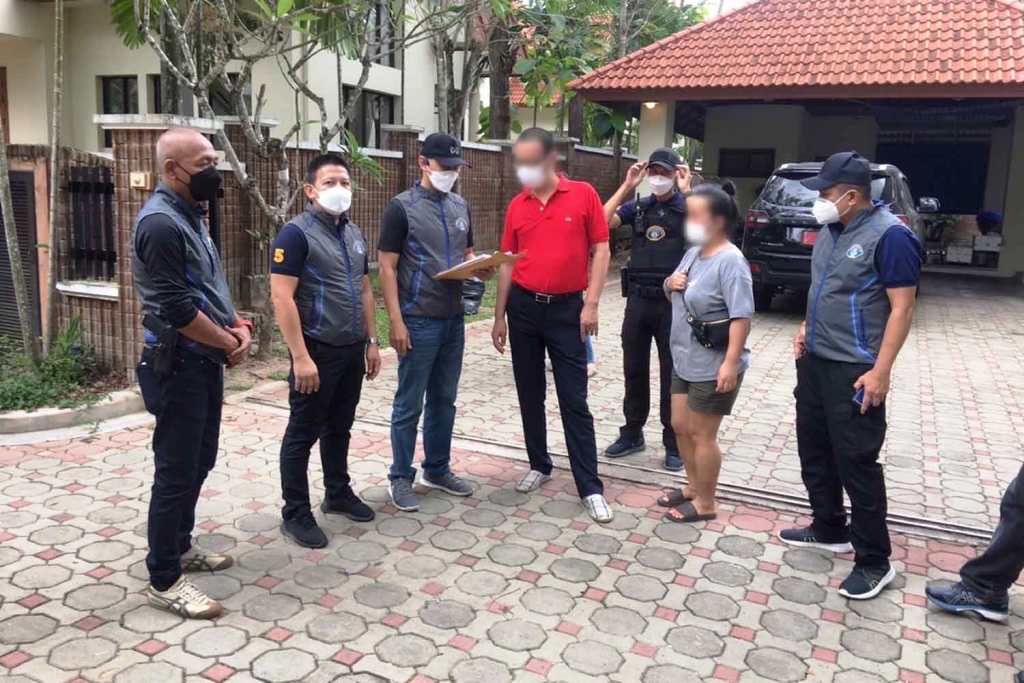Business
New Sanctions on Russia and Their Impact on Global Trade, Markets
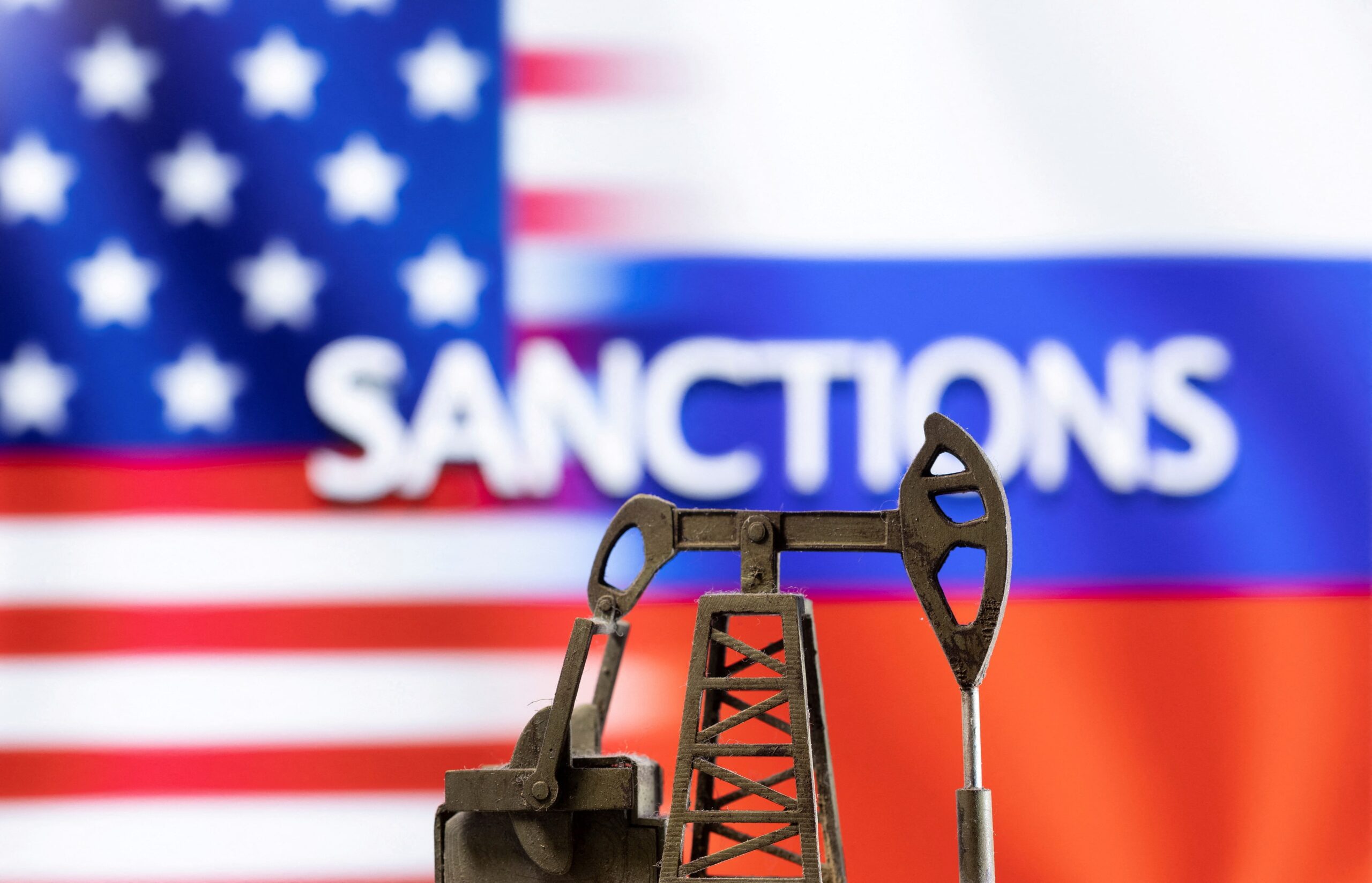
Sanctions used to be a topic for diplomats and policy experts. Today, they affect gas bills, food prices, and even mortgage rates. The latest rounds of new sanctions on Russia in 2024 and 2025 show this very clearly.
After Russia’s full-scale invasion of Ukraine in 2022, many countries chose sanctions instead of direct war. In 2025, the US, EU, UK, and allies pushed new packages that hit Russian energy, banks, and military-linked companies harder than before. These moves are now reshaping how countries buy energy, how ships move around the world, and how money flows through global markets. They also sit at the heart of Europe’s Energy Crisis.
The European Union’s 19th sanctions package, along with new US measures, now targets Russian oil, gas, LNG, and finance in a much deeper way. As a result, Europe is racing to find new energy suppliers, companies are rewriting trade routes, and investors are watching markets jump on every new headline.
What Are the New Sanctions on Russia and Why Do They Matter?
Sanctions are basically rules that limit or block trade and finance with a country, company, or person. They are a tool that governments use when they want to punish bad behavior, but do not want a direct military fight.
In late 2025, the EU adopted its 19th package of sanctions against Russia. It is the toughest so far. Official EU statements explain that this package targets Russian energy exports, including liquefied natural gas (LNG), as well as banks, crypto services, and companies in other countries that help Russia’s war effort. You can see this described in more detail in the EU’s announcement on the 19th package of sanctions against Russia.
At the same time, the US and UK increased pressure on Russian oil majors and financial channels that still help Russia earn foreign currency and buy imported goods.
Why does this matter for regular people? Because Russia is a major exporter of oil, gas, LNG, metals, and grain. When those flows are restricted or rerouted, prices and supplies change, often far from the war itself. That change feeds into global trade, stock markets, and day-to-day costs for households.
Simple Explanation of Sanctions and How They Work
Think of sanctions as strict rules for doing business. Governments tell banks and companies: “You cannot deal with that person, that company, or that country, at least not in certain areas.”
Some common types of sanctions are:
- Trade bans: For example, no importing Russian oil or LNG into the EU.
- Financial blocks: Cutting Russian banks off from global payment systems.
- Export controls: Limiting high-tech gear, machinery, or chemicals that can be used for weapons.
- Asset freezes and travel bans: Blocking the money and movement of certain people.
Here is a simple example. If a Russian oil company is on a sanctions list, a European bank may not be allowed to process its payments. So the company cannot easily get paid in euros or dollars. That makes it harder for Russia to sell energy and to fund its war.
The official goal of these tools is to pressure leaders and the war economy, not to punish ordinary people. In real life, though, regular people often feel the side effects, like higher fuel or food prices.
Key New Measures in 2025: Energy, Finance, and Military Trade
The 19th EU package is a big step up. According to EU and news reports, including finance-focused coverage of the 19th sanctions package and Reuters reporting on the LNG ban and ship list, the latest measures include:
Energy
- A full ban on Russian LNG imports into the EU, with phase-out periods for existing contracts.
- Tighter limits on Russian oil, including exports linked to big companies like Rosneft and Gazprom Neft.
- A crackdown on Russia’s “shadow fleet”, with over 500 ships listed for trying to hide the origin of oil or dodge price caps.
Finance
- EU firms will be banned from using Russian financial messaging systems such as SPFS, SBP, and Mir, starting in early 2026.
- New sanctions on crypto exchanges and services that help Russia move money outside the regular banking system.
- More Russian banks added to EU and US sanctions lists.
Military and war economy
- Extra export bans on items that can support Russia’s military industry, such as certain metals, electronics, and construction materials.
- Dozens of new individuals and companies linked to the war or to sanctions evasion added to sanction lists.
- Companies in third countries, including parts of Asia and the Middle East, targeted if they help Russia dodge rules.
Legal and compliance experts have summarized how broad this 19th package is, for example in analyses like Skadden’s overview of the EU sanctions update and Rimon Law’s summary of new export restrictions.
How These Sanctions Are Different From Earlier Ones
Right after the 2022 invasion, sanctions focused on some banks, elites, and high-tech exports. Many energy flows, especially gas, were left partly open. Europe still depended on Russian pipeline gas and some oil.
As the war dragged on, the logic changed. The newest measures:
- Hit core energy exports harder
Earlier packages left large gaps for LNG and some oil routes. The 19th EU package moves toward a total LNG ban and closes many of those gaps. - Widen the target list
More banks, more companies, more ships, more individuals. Sanctions now reach deeper into Russia’s energy system and war economy. - Push back against workarounds
The EU and US now pay closer attention to traders, banks, and shippers in third countries that help Russia bypass rules.
Because of these changes, sanctions now affect not just Russia, but the whole web of global trade, shipping, and finance that used to move Russian goods.
How New Russia Sanctions Are Shaping Global Trade Flows
When a major exporter like Russia faces new limits, trade routes bend. Ships change ports. Contracts get rewritten. Middlemen appear.
The latest sanctions affect three big areas:
- Energy trade, especially oil, gas, and LNG.
- Key raw materials, such as metals, fertilizers, and grains.
- Shipping and insurance, which act as the backbone of trade.
All of this links back to Europe’s Energy Crisis, where the loss of Russian energy has forced a huge and costly shift to new suppliers.
Energy Trade Disruptions and Europe’s Energy Crisis
Before the war, Europe relied heavily on Russian pipeline gas. When those flows dropped, Europe turned to LNG from many places, including still from Russia in the short term. The new EU LNG ban removes that last piece over time.
This is central to Europe’s Energy Crisis. Europe now needs to:
- Replace Russian pipeline gas and LNG with imports from the US, Qatar, and African producers.
- Compete with Asian buyers for the same LNG cargoes.
- Make sure storage tanks are full before each winter.
When more buyers chase the same limited gas, prices can jump. That hits:
- Households, through higher heating and electricity bills.
- Factories, through higher energy costs that cut profits or force shutdowns.
- Governments, which may spend more on subsidies or price caps.
The crisis in Europe feeds into global markets. If Europe buys more LNG from the US, that affects how much is left for other regions and what price they pay.
Shifts in Oil, Gas, and LNG Trade Routes Worldwide
Russian oil and gas do not simply vanish. They look for new homes.
Here is what is happening:
- Oil that used to go to Europe now sails to Asia, especially India and China, often on longer routes that use more ships and time.
- Russia offers discounts to buyers willing to ignore or work around Western sanctions and price caps.
- A “shadow fleet” of older tankers moves Russian oil under different flags, hidden ownership, or switched-off tracking systems.
- Europe increases LNG imports from friendly countries and signs long-term contracts to replace Russian supply.
These shifts bring higher transport costs and more complex logistics. New trading hubs and middlemen appear in places like the Middle East, the Caucasus, and parts of Asia. This extra friction often shows up as higher prices for end buyers.
Impact on Food, Metals, and Other Key Commodities
Russia and Ukraine are both major food and raw material exporters. That includes:
- Wheat and other grains.
- Fertilizers such as potash and nitrogen products.
- Metals like nickel and aluminum.
Sanctions on Russian banks, shipping, and insurance, plus the risk from war in the Black Sea region, can slow these exports or make them more expensive.
For poorer countries that import a lot of food or fertilizer, higher prices can hit hard. If fertilizer costs more, farmers may use less, which can reduce crop yields. Less supply can push food prices higher. That is how a war in Europe and sanctions on Russia can affect the price of bread or meat in faraway regions.
Even when food and fertilizers are not directly banned, the extra cost of ships, insurance, and financing still raises prices along the supply chain.
New Trade Partners and Alliances Outside the West
As Western markets close, Russia has looked for partners elsewhere. It has deepened ties with:
- BRICS countries, like China and India.
- Middle Eastern states, that seek cheap oil and gas.
- Some African and Latin American countries, that want investment or discounted fuel.
At the same time, more companies in these regions face pressure from US and EU sanctions if they help Russia buy weapons or evade rules. Some Chinese, Gulf, and other firms have already been listed for supplying sensitive goods or finance linked to the war.
This raises a bigger question: will world trade split into blocks? One block could be centered on US and EU rules, with stricter sanctions and controls. Another could trade more freely with Russia, Iran, and other sanctioned states.
For businesses, this means more uncertainty. They may need separate supply chains for different markets, and they face higher legal and reputational risks.
How Sanctions on Russia Are Moving Global Markets and Prices
Markets react to news in seconds. When governments announce new sanctions, traders quickly guess what that means for supply, demand, and risk.
For Russia sanctions, three areas move first:
- Energy prices, especially oil and gas.
- Stock markets and currencies.
- Inflation and interest rates.
These shifts affect regular people through fuel prices, grocery bills, and borrowing costs.
Oil and Gas Prices: Why Energy Costs Stay Volatile
Energy markets do not like uncertainty. Every time there is a new LNG ban, ship blacklist, or banking restriction, traders worry about tighter supply.
A simple rule helps:
- When supply shrinks and demand stays strong, prices tend to rise.
- When supply grows or demand falls, prices tend to drop.
With Russia sanctions, many traders expect some loss of supply or at least higher transport costs. That supports higher prices than before the war. At the same time, if the global economy slows, or if Europe has a mild winter with full gas storage, prices can fall back.
Because these forces push in both directions, energy prices stay jumpy. This constant up and down is a key part of Europe’s Energy Crisis, since businesses and households struggle to plan when they do not know what their bills will look like a few months ahead.
Stock Markets, Currencies, and Investor Fear
Stock markets often react strongly to big sanctions news:
- Energy company stocks can rise if investors expect higher oil and gas prices that boost profits.
- Airlines, shipping lines, and heavy industry can fall if investors fear higher fuel and raw material costs.
- Banks and insurers may drop if they face legal or credit risks from sanctions.
Currencies also move:
- Countries that export oil and gas sometimes see stronger currencies when prices rise.
- The Russian ruble has faced heavy pressure since 2022, with capital controls and sanctions limiting trade in the currency.
- Safe-haven currencies, like the US dollar and Swiss franc, can gain when investors get scared and pull money out of riskier places.
Investors also worry about how strict enforcement will be. A new round of penalties for shipowners or traders can quickly change sentiment and add to swings in markets.
Inflation, Interest Rates, and What Households Feel
Sanctions and trade shocks feed into inflation. When energy, shipping, and raw materials cost more, companies often pass that on to consumers. This shows up in:
- Higher heating and electricity bills.
- More expensive gasoline and diesel.
- Rising prices for food and packaged goods.
Central banks use interest rates to fight inflation. If prices rise too fast, they may raise rates. That can cool demand but also makes loans, credit cards, and mortgages more expensive.
This is a sharp trade off. On one side, sanctions try to weaken Russia’s war machine. On the other, they can add to price pressure around the world. In Europe, energy-driven inflation has been a big piece of Europe’s Energy Crisis, forcing governments to respond with tools like tax cuts, targeted subsidies, and caps on certain energy prices.
What Comes Next for Sanctions, Europe’s Energy Crisis, and Global Trade?
No one knows exactly how long the war in Ukraine will last or how far sanctions will go. Still, some paths look more likely than others.
Looking ahead, three big questions stand out:
- How much tighter will sanctions and enforcement become?
- How will Europe’s energy system change over the next decade?
- Will global trade split into blocks or slowly reconnect?
Possible Future Sanctions and Tighter Enforcement
Many governments have already signaled that more could come if the war continues. Future steps might include:
- Closing more loopholes in the oil price cap system.
- Targeting more banks and trading firms in third countries.
- Expanding controls on dual-use goods that can help the Russian military.
Experts often stress that enforcement matters as much as new rules. If ship tracking, cargo checks, and payment monitoring get stronger, sanctions will bite harder.
For global supply chains, that could mean:
- More checks and paperwork for cargoes that might involve Russia.
- Higher compliance costs for shipping, insurance, and banks.
- A greater chance of delays in energy and raw materials deliveries.
Long Term Impact on Europe’s Energy Crisis and Green Transition
Europe’s Energy Crisis is not only about this winter or next year. It is also reshaping long term energy plans.
The loss of cheap Russian gas has pushed European leaders to:
- Speed up investment in solar, wind, and other renewables.
- Build more LNG terminals, pipelines, and storage connected to friendly suppliers.
- Promote energy savings in homes and factories, from better insulation to smarter grids.
Over time, these steps can make Europe less dependent on risky suppliers and more stable. Cleaner energy also helps with climate goals.
There is a hard side too:
- New infrastructure and renewable projects cost a lot of money.
- Some regions depend on old energy industries and fear job losses.
- Political debates grow over who pays, how fast to move, and how to protect vulnerable groups during the transition.
The mix of sanctions, security worries, and climate policy will drive Europe’s choices for many years.
Global Trade: Risk of Fragmentation or Chance to Rebuild?
The global trade system is under stress. Some companies and countries talk about “de-risking” from overly tight ties to any single partner, especially those seen as risky or unfriendly.
Two broad paths are possible:
- Deeper fragmentation
The world splits more into trade blocks. One block is centered on the US and EU, with strong sanctions and security rules. Another block includes Russia, China, Iran, and others that trade more among themselves, sometimes with separate payment and tech systems. - Partial rebuild and adjustment
Over time, some trust returns in areas that are less sensitive. Trade flows shift but do not completely break. Countries keep security in mind but still seek gains from trade.
In both paths, companies are already:
- Spreading suppliers across more countries.
- Shortening some supply chains or bringing key production closer to home.
- Rewriting contracts to handle sanctions and political risk better.
This can increase costs but may reduce the chance of sudden shocks like those seen since 2022.
Conclusion
The latest new sanctions on Russia have moved far beyond the early steps of 2022. They now cut deep into energy exports, finance, and the war economy, and they reach into third countries that help Russia work around the rules. These measures reshape Europe’s Energy Crisis, alter global trade routes, and stir markets every time a new package or enforcement move is announced.
Sanctions are meant to reduce Russia’s ability to fund and fight the war in Ukraine. At the same time, they bring real side effects, from higher gas and electricity bills in Europe to rising food prices in poorer countries. The choices that governments make on sanctions, energy policy, and trade will shape prices, jobs, and stability long after the war ends.
For anyone who pays a power bill, buys groceries, or holds a mortgage, these issues are not distant geopolitics. They are part of daily life. Paying attention to Europe’s Energy Crisis, sanctions policy, and global trade helps people understand why costs are changing and what might come next, even if they live far from Russia or Europe.
Related News:
Russia Bans Facebook, Meta Says It Will Do Everything To Restore Service
Business
International Air Chiefs Meet in Dubai for 12th DIACC
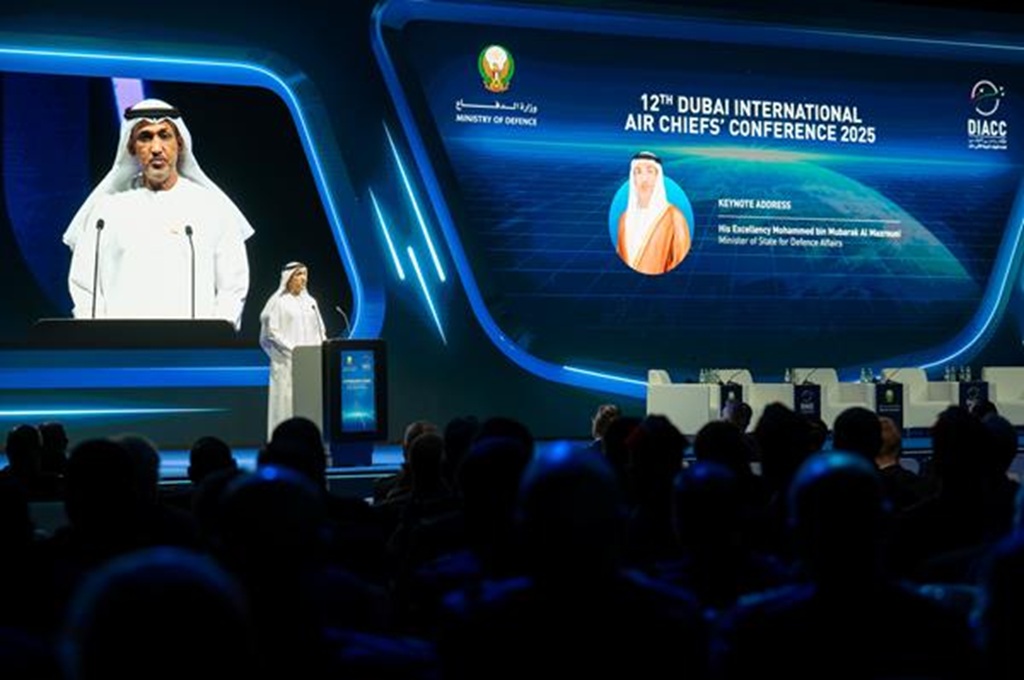
DUBAI, United Arab Emirates – Under the patronage of His Highness Sheikh Mohammed bin Rashid Al Maktoum, Vice President and Prime Minister of the UAE and Ruler of Dubai, His Excellency Mohamed bin Mubarak bin Fadhel Al Mazrouei, UAE Minister of State for Defence Affairs, opened the 12th Dubai International Air Chiefs Conference (DIACC).
The opening ceremony took place at Atlantis, The Palm in Dubai, with more than 100 official delegations from across the globe. Senior officers from the Ministry of Defence, air force leaders, chiefs of staff from partner and allied countries, as well as decision-makers and CEOs from major national, regional, and international companies, also attended. These organizations work in defense, aviation, advanced technology, space sciences, and artificial intelligence.
The UAE Ministry of Defence organized the conference in strategic partnership with ADNEC Group, under the theme “Hypersonic Edge: Re-Envisioning Airpower Across Asymmetric Spaces.”
The first session, titled “Hypersonics, UAVs, and Artificial Intelligence: Adapting Airpower to Asymmetric Battlespaces,” began with opening remarks from Joseph Guastella, Corporate Vice President and Regional Executive for Europe and the Middle East at Northrop Grumman.

This session brought together Major General Rashid Mohammed Al Shamsi, Commander of the UAE Air Force and Air Defence, General Adrian L. Spain, Commander of the US Air Combat Command, General Jérôme Bellanger, Chief of Staff of the French Air and Space Force, and Lieutenant General J.R. Speiser-Blanchet, Commander of the Royal Canadian Air Force. They spoke about how to build agile coalitions and lead through modern airpower challenges, followed by an interactive discussion with official delegations.
The second session, titled “Beyond the Atmosphere: Integrating Air and Space Capabilities for Strategic Superiority,” highlighted the growing link between air and space power.
Speakers included Major General Vincent Chusseau, Commander of the French Space Command, and His Excellency Eng. Salem Butti Al Qubaisi, Director General of the UAE Space Agency. Air Marshal Stephen Chappell, Chief of the Royal Australian Air Force, also took part, followed by Air Marshal Narmdeshwar Tiwari, Vice Chief of Air Staff of the Indian Air Force.
The third and final session, titled “The Warfighter of Tomorrow: Standards, Artificial Intelligence, and Accountability in Next-Generation Airpower,” opened with an introductory remark from Dr. Chaouki Kasmi, President of Technology and Innovation at EDGE Group.

Dr. Kasmi also moderated the session, which focused on how to prepare future air forces and their people. Major General Jonas Wickman, Commander of the Swedish Air Force, spoke about new approaches to recruitment and building the force of the future.
General Son Sug Rag, Chief of Staff of the Republic of Korea Air Force, addressed the topic “Mastering asymmetric spaces: redefining the warfighter for the future.”
Lieutenant General Antonio Conserva, Chief of the Italian Air Force, discussed “Standards under pressure: maintaining excellence in the age of automation.”
Professor Peter Hays from the Space Policy Institute at George Washington University presented a paper titled “Learning to Learn: Building Intellectual Readiness for the Future Space Battlespace.” The conference wrapped up with an official recognition ceremony for participants, followed by a group photo session.
The Dubai International Air Chiefs Conference (DIAC)
The Dubai International Air Chiefs Conference (DIAC) is a high-level event held every two years. It brings together air force commanders, senior defense officials, and aerospace specialists from across the globe. The conference is one of the leading international forums devoted entirely to air and space power.
Key Details
- Organized by: United Arab Emirates Air Force & Air Defence, in cooperation with the Dubai Airshow organizing team. DIAC usually takes place alongside, or just before, the Dubai Airshow.
- First held: 2005
- Frequency: Every odd-numbered year (2005, 2007, 2009, and so on through 2025 and beyond)
- Location: Dubai, United Arab Emirates, typically at the Al Maktoum Ballroom or a similar venue close to the Dubai Airshow site at Dubai World Central (Al Maktoum International Airport)
- Next edition: The 2025 conference is planned for 10–11 November 2025, just ahead of the Dubai Airshow 2025, which takes place from 17–21 November
Main Objectives
- Promote strategic dialogue among air chiefs on current and future air power issues.
- Share operational lessons from recent missions, such as counter-terrorism campaigns and air operations in Libya, Syria, Yemen, Ukraine, and other theaters.
- Address new technologies, including 5th and 6th generation fighters, unmanned combat aircraft, hypersonic systems, space-based capabilities, artificial intelligence, and cyber protection of air assets.
- Support international cooperation and encourage new defense and security partnerships.
- Connect industry with decision-makers, giving aerospace and defense companies direct insight into the Air Force’s needs and long-term plans.
Typical Attendees
- Air chiefs and commanders from more than 40 to 50 air forces worldwide. Recent editions have seen participation from the USAF, RAF, French Air Force, Russian Aerospace Forces, Indian Air Force, PLAAF, RSAF, Turkish Air Force, Egyptian Air Force, and many others.
- Senior officials from defense ministries and government agencies.
- CEOs and senior leaders from major aerospace and defense firms, including Lockheed Martin, Boeing, Dassault, Airbus, BAE Systems, Raytheon, Leonardo, EDGE Group, and more.
- Representatives from international bodies, such as NATO and the Gulf Cooperation Council air power coordination groups.
Format
- Day 1–2: Closed plenary sessions for air chiefs only, with classified briefings and discussions.
- Open sessions that feature keynote speeches, expert panels, and audience Q&A.
- Scheduled bilateral and multilateral meetings, along with networking receptions and side events.
- The conference often ends with a joint statement or communiqué that reflects the main themes and shared views.
Significance
- DIAC is one of the very few platforms where air chiefs from countries that may belong to rival or competing blocs, such as U.S./NATO partners and Russia or China-aligned forces, sit together and openly exchange perspectives.
- The conference has a direct impact on future procurement plans; many large defense contracts announced at or shortly after the Dubai Airshow often grow out of contacts and discussions that start at DIAC.
- The United Arab Emirates uses DIAC to highlight its role as a key global center for aerospace, defense, and advanced air power cooperation.
In simple terms, DIAC is often seen as the “Davos of air power,” a rare mix of high-level strategy talks and industry networking, held every two years in Dubai under the patronage of the UAE leadership.
Related News:
Long overshadowed by Dubai, Wizz Air will leave Abu Dhabi’s Zayed International Airport.
Asia
BPP Accelerates Growth with Portfolio Transformation into Power
BPP Accelerates Growth with Portfolio Transformation into Power+,
with THB 1,161 Million Profit in Q3/2025
BPP elevates its position as a leader in utility-scale power and integrated businesses under Banpu Group’s Power+ pillar, operating a power pure-play platform
Plans to amalgamate with Banpu Public Company Limited and partially divest 25% of the membership interests in the joint venture BKV-BPP Power LLC (BKV-BPP), with BPP’s Extraordinary General Meeting of Shareholders (E-Meeting No. 1/2026) scheduled for 29 January 2026
Delivers strong Q3/2025 performance, reporting THB 1,161 million profit, driven by power plants in China
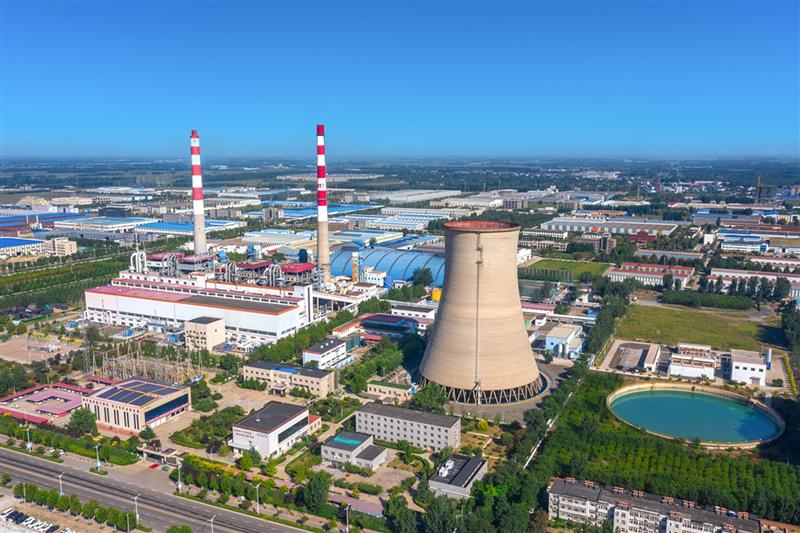
Banpu Power Public Company Limited (BPP), an international energy producer company, is preparing for a major strategic transition aimed at accelerating sustainable growth and delivering long-term value for shareholders. Although BPP continues to generate strong performance and robust cash flows from its high-quality assets across the Asia-Pacific region, the company’s share price does not yet reflect its full growth potential.
To enhance financial flexibility and strengthen its capacity for future expansion, BPP plans to amalgamate with Banpu Public Company Limited to establish a newly formed entity (“NewCo”), while partially divesting a 25% membership interest in BKV-BPP Power LLC (BKV-BPP).
These steps will elevate BPP from a regional energy producer to a leader in utility-scale power and integrated businesses under “Power+”, one of the core business pillars of Banpu Group.
This direction positions the company to capture rising global electricity demand, which is expected to grow at more than twice the rate of overall energy demand during 2025-2026[1], driven by industrial activity and digital technologies. In Q3/2025, BPP continued to deliver strong profitability from its power plants in China, underscoring the stability of its power operations and its readiness for future growth.
Mr. Issara Niropas, CEO of BPP, said, “The amalgamation marks an important milestone for BPP as we advance into Power+, a power pure-play platform that brings together BPP’s base-load power plants across Asia Pacific and the United States, encompassing thermal power plants along with certain businesses from Banpu NEXT, including renewables, battery energy storage system (BESS), and energy trading, empowering BPP to operate across the entire energy value chain.
The portfolio transformation being undertaken will enhance our financial flexibility and capital efficiency, reduce duplicative costs, and enable future large-scale investment opportunities.”
“In addition, the partial divestment of a 25% membership interest in BKV-BPP to BKV Corporation (BKV), Banpu’s subsidiary listed on the New York Stock Exchange (NYSE), will help reflect the true market value of the assets in the U.S., reinforce BPP’s financial position, unlock capital, and pave the way for new investment opportunities to support long-term growth. BPP will retain a 25% stake in the joint venture to preserve its strategic position in the U.S. market,” Mr. Issara Niropas added.
Under the proposed amalgamation, shares of NewCo will be allocated to BPP shareholders based on the preliminary share swap ratio of 1 existing BPP share to 0.74615 NewCo share. In addition, Banpu will proceed with a general offer for up to 21.34% of BPP’s total issued and outstanding shares at an offer price of THB 13.00 per share, from 1 to 23 December 2025.
Banpu will provide shareholders with details of the processes and procedures related to the general offer. The amalgamation and the partial divestment of the BKV-BPP membership interest will be presented for shareholder approval at the online Extraordinary General Meeting of Shareholders (EGM) No. 1/2026 of BPP on 29 January 2026.
In Q3/2025, BPP recorded a net profit of THB 1,161 million, a 2% year-on-year increase, and total earnings before interest, taxes, depreciation, and amortization (EBITDA) of THB 2,611 million, up 15% from the same period last year.
Key contributors included strong performance from the Shanxi Lu Guang (SLG) power plant and combined heat and power (CHP) plants in China, driven by highly efficient coal cost management. Meanwhile, the HPC power plant in Lao PDR and the BLCP power plant in Thailand operated efficiently throughout the quarter, maintaining high equivalent availability factors (EAF) of 92% and 99%, respectively.
BPP’s investment in the Jinhu Qianfeng solar farm with battery energy storage system (BESS) in China, featuring 120 MW of installed solar generation capacity and a BESS installation of 10 MW of power capacity and 20 MWh of energy storage capacity, is expected to achieve commercial operations (COD) in 2026.
Meanwhile, the company’s energy trading business in Japan sold a total of 5,325 GWh of electricity between January and September 2025, serving 1,875 customers, and has integrated AI-driven price forecasting to enhance operational efficiency and profitability.
“This strategic plan reinforces BPP’s commitment to driving sustainable regional growth while maintaining the strength of its core assets in the U.S. and China. At the same time, we continue to expand our investment portfolio across renewable energy and emerging energy technologies, aligning with Banpu Group’s long-term growth strategy and the evolving trajectory of the future energy landscape,” Mr. Issara Niropas concluded.
Learn more about BPP’s business at www.banpupower.com
[1] Electricity Mid-Year Update 2025, International Energy Agency (IEA)
About BPP
Banpu Power PCL (BPP), an international energy producer company, drives utility-scale power and integrated businesses under “Power+,” one of Banpu Group’s core business pillars, across the Asia Pacific. Operating under the concept “Pioneering Energy, Empowering Tomorrow,” BPP is committed to powering a better tomorrow with reliable energy.
For nearly three decades, BPP has been at the forefront of delivering reliable, high-quality energy that meets global standards by integrating advanced technologies with decarbonization efforts and strong corporate governance. BPP also actively supports local communities and aligns its operations with environmental goals in every country where it operates.
Related News:
Thailand Artist Wins the 2025 UOB Southeast Asian Painting of the Year Award
Business
Ascott Launches Holistic Disability Inclusion Playbook for the Accomodation Sector
One of the world’s first open-access playbooks providing hospitality operators with a holistic, practical framework to embrace disability inclusion
Supported by SG Enable, World Sustainable Hospitality Alliance and Valuable 500 and reviewed by nearly 20 disability inclusion experts globally
Company announces global disability inclusion commitments, including standardised accessibility profiles for all properties, frontline disability awareness training and reporting on the hiring of persons with disabilities starting 2026
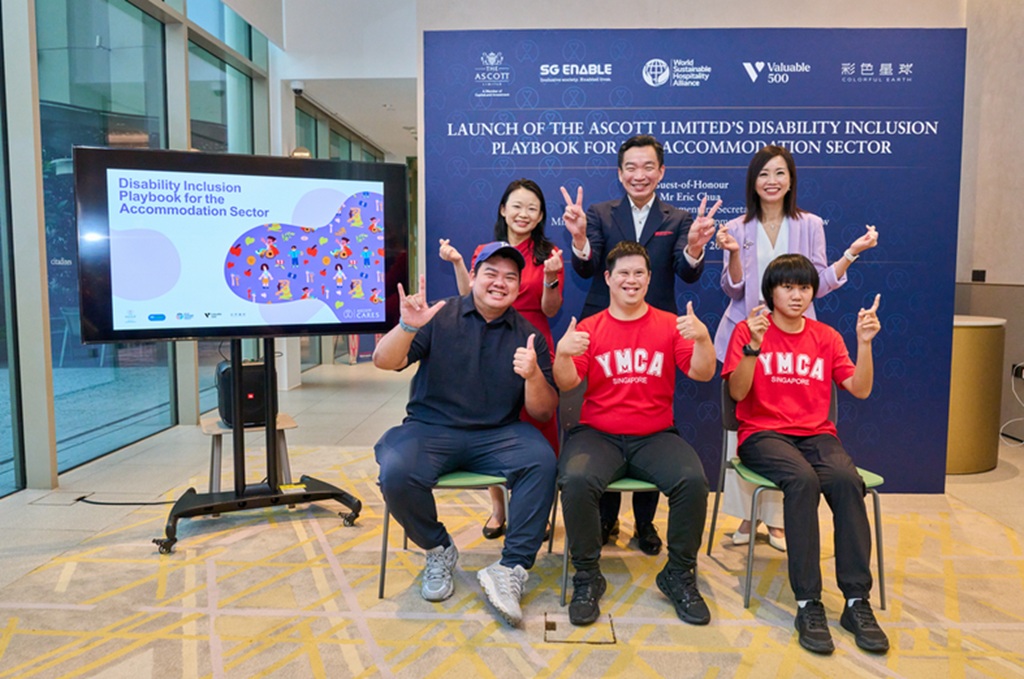
SINGAPORE — The Ascott Limited (Ascott), the wholly owned lodging business unit of CapitaLand Investment (CLI), has launched the Disability Inclusion Playbook for the Accommodation Sector. As one of the world’s first open-access, holistic disability inclusion playbooks, it sets a new benchmark for inclusive hospitality.
Developed by Ascott in partnership with disability inclusion specialists Colorful Earth, it is supported by SG Enable (Singapore’s focal agency for disability and inclusion), World Sustainable Hospitality Alliance (a global coalition driving sustainability in hospitality), and Valuable 500 (a global non-profit of over 500 multinational corporations advancing disability inclusion).
Offering guidance across five key pillars of disability inclusion – Inclusive Training, Spaces, Hiring, Digital Interface, and Programmes – the playbook empowers accommodation providers of all sizes to deliver welcoming and inclusive stay experiences from pre-arrival to departure, while fostering inclusive hiring and training practices.
It addresses the diverse needs of travellers with disabilities, covering areas such as governance and strategy, collaboration with the disability community, barrier-free infrastructure, accessible programs, and function-specific training.
The playbook’s launch event took place at Citadines Science Park Singapore, officiated by Guest-of-Honour Mr Eric Chua, Singapore’s Senior Parliamentary Secretary for the Ministry of Social and Family Development and the Ministry of Law.
He said: “A truly inclusive society that strengthens the quality of life for persons with disabilities is a whole-of-society effort. I am glad that like-minded partners such as Ascott have come on board, and welcome more to join us. Together, we must work to build a more caring and inclusive Singapore.”
Ascott’s Disability Inclusion Commitments
At the launch, Ascott announced a comprehensive set of disability inclusion commitments, structured around the playbook’s five-pillar framework:
- Starting from 2026, at least one Ascott property in every country where it operates will host a community programme dedicated to disability inclusion. The company will also begin reporting on the hiring of persons with disabilities in its annual sustainability reports. Every property will feature a standardised accessibility profile detailing room features, measurements, and accessible transport
options, empowering guests to make informed booking decisions. Currently, around 60% of Ascott’s operational properties already provide accessibility information, with plans to transition to a standardised template and extend it progressively across the remaining properties.
- By 2027, 100% of Ascott’s frontline associates globally will have completed disability awareness training. To date, over 100 associates in Singapore and Australia have been trained to create welcoming stay experiences for guests with disabilities.
- By 2028, all guest-facing digital platforms will meet Web Content Accessibility Guidelines (WCAG)
2.1 AA accessibility standards, ensuring a seamless and inclusive online experience. Ascott’s booking website, DiscoverASR.com, already complies with these standards, with its Ascott Star Rewards mobile app next in line.
Ms Beh Siew Kim, Chief Financial and Sustainability Officer, Lodging, CapitaLand Investment, said: “We are honoured to launch the open-access Disability Inclusion Playbook for the Accommodation Sector, a practical resource developed in close collaboration with disability inclusion experts and informed by our global hospitality operations.
The playbook will guide Ascott’s disability inclusion efforts across our global portfolio of more than 1,000 operational and pipeline properties in over 40 countries, and we welcome other operators to join us in this collective journey.”
“Real inclusion requires more than guidance – it demands action, accountability, and shared learning. That is why Ascott is backing this playbook with measurable commitments across our global portfolio, including standardised accessibility profiles for our properties, comprehensive staff training, and transparent reporting on our progress.
By sharing both our learnings and commitments, we aim to accelerate collective progress and show that inclusive hospitality is not just the right thing to do; it is vital to building resilient businesses that truly serve all guests and communities,” she added.
Driving Inclusive Hospitality Through Collaboration and Expertise
An estimated 1.3 billion people – or about 16% of the global population – live with permanent disabilities1, representing a substantial yet underserved market in tourism and hospitality.
Accessibility is therefore both a social imperative and a significant opportunity for the hospitality industry. Ascott’s Disability Inclusion Playbook addresses this need with practical guidance drawn from its global operations and reviewed by nearly 20 experts from Colorful Earth, SG Enable, World Sustainable Hospitality Alliance, and Valuable 500.
The playbook is also a key outcome of Ascott’s 2024 Memorandum of Understanding with SG Enable, the first partnership of its scale in Singapore’s hospitality sector. This collaboration has already produced industry-first initiatives, including Singapore’s first hospitality-specific disability inclusion training, launched at the Ascott Centre for Excellence in June 2025.
1 Source: World Health Organisation: Global Report on Health Equity for Persons with Disabilities.
Ms Lee May Gee, CEO of SG Enable, said: “This global disability inclusion playbook translates aspiration into action – exemplifying what can be achieved when industry leaders, persons with disabilities, and community partners come together to co-create solutions grounded in lived experience. We hope it inspires others in the hospitality and tourism sectors to join us in shaping a world where everyone feels welcomed, valued and included.”
Mr Glenn Mandziuk, President & CEO, World Sustainable Hospitality Alliance, stated: “Today marks a pivotal moment for global hospitality. This Playbook is more than a guide; it is a beacon for systemic change, transforming the industry’s ambition for disability inclusion into tangible action.
We are profoundly grateful to Ascott for its catalytic investment and leadership, and to Colorful Earth for authoring a truly superb and practical playbook. This collaborative triumph with SG Enable and the Valuable 500 proves that true hospitality must be universally accessible. It provides our entire industry with the crucial roadmap to build a future where everyone, without exception, can truly belong.”
Ms Katy Talikowska, CEO, Valuable 500, said: “Ascott’s Disability Inclusion Playbook offers practical processes and strategic guidance to help hospitality organisations of all sizes move from intent to impact.
It recognises that inclusion is not a single department’s job but a shared responsibility that touches every guest experience and employee interaction. From accessible digital interfaces to inclusive hiring and spatial design, the framework aligns perfectly with Valuable 500’s vision of inclusion as a driver of innovation, growth, and resilience.”
Breaking Barriers through Art
A highlight of the launch event was the unveiling of the playbook’s cover artwork, a visual representation of the collaboration and creativity at the heart of Ascott’s disability inclusion initiatives. Co-created by artists with disabilities from SG Enable’s i’mable Collective alongside Ascott associates, the artwork reflects the values of empowerment, diversity,y, and community that drive the company’s inclusion efforts.
The i’mable Collective connects persons with disabilities to professional creative opportunities, making this partnership a demonstration of the inclusive practices the playbook promotes.
The playbook cover design was co-created by artists supported by SG Enable’s i’mable Collective alongside Ascott associates. Behind this meaningful unveiling was a collaborative process that brought together diverse talents to create artwork representing the five pillars of Ascott CARES (Community, Alliance, Respect, Environment, and Supply Chain), the company’s sustainability framework.
The ‘Respect’ pillar artwork, embodying Ascott’s inclusion initiatives, was selected for the playbook front cover, while artwork representing all five pillars featured on the back cover. The artwork will also be incorporated into future Ascott CARES apparel and collateral, ensuring the spirit of this partnership continues to inspire across the organisation.
Bringing the Playbook to Life
The launch event also showcased an assistive amenities toolkit that brings the playbook’s Inclusive Programmes pillar to life. Co-developed by Ascott and SalvageGarden – Southeast Asia’s first assistive tech makerspace – the 3D-printed prototype toolkit is designed to enhance the stay of guests with physical disabilities or limited handgrip.
Ascott will pilot the initiative at its Singapore properties, including Citadines Science Park Singapore, lyf Funan Singapore, Citadines Rochor Singapore, and Oakwood Studios Singapore. Each toolkit includes holders for cutlery, toothbrushes, combs, and mugs, a toothpaste squeezer, and a tactile hotel map. Guests will be invited to test the toolkits and provide feedback to shape the next version of the toolkit.
Expanding the Playbook’s Reach
Ascott’s Disability Inclusion Playbook for the Accommodation Sector is now publicly available on its global website, DiscoverASR.com, and will be promoted across partner platforms of SG Enable, World Sustainable Hospitality Alliance, and Valuable 500. It will also be featured on Singapore Tourism Board’s website and its tri-annual newsletter to hotel stakeholders, reinforcing Singapore’s position as a world-class, accessible destination.
For more information and key milestones in Ascott’s disability inclusion journey, please refer to The Ascott Limited Sustainability Report 2024 (pages 23 to 28), which highlights the company’s actions and progress towards its vision of building a greener, more inclusive future.
About The Ascott Limited
The Ascott Limited (Ascott) is driven by a vision to be the preferred hospitality company, enriching global living with heartfelt experiences. With a portfolio of more than 1,000 properties spanning over 230 cities across more than 40 countries, Ascott’s presence spans Asia Pacific, Central Asia, Europe, the Middle East, Africa, and the USA.
Its diverse collection of award-winning brands includes Ascott, Citadines, lyf, Oakwood, Somerset, The Crest Collection, The Unlimited Collection, Fox, Harris, POP!, Preference, Quest, Vertu, and Yello.
Ascott specialises in managing and franchising a wide range of lodging options, including serviced residences, hotels, resorts, social living properties, and branded residences, catering to the varying needs and preferences of global travellers. Through the Ascott Star Rewards (ASR) loyalty programme, members enjoy exclusive privileges and curated experiences, enhancing every aspect of their travel journey.
As a wholly owned business unit of CapitaLand Investment Limited, Ascott generates fee-related earnings by leveraging its expertise in both lodging management and investment management. It also drives the
expansion of funds under management by growing its sponsored CapitaLand Ascott Trust and private funds. For more information on Ascott and its sustainability programme, please visit www.discoverasr.com/the- ascott-limited. Alternatively, connect with Ascott on Facebook, Instagram, TikTok, a nd LinkedIn.
About CapitaLand Investment Limited
Headquartered and listed in Singapore in 2021, CapitaLand Investment Limited (CLI) is a leading global real asset manager with a strong Asia foothold. Aofat 5 November 2025, CLI had S$120 billion of funds under management.
CLI holds stakes in eight listed real estate investment trusts and business trusts and a suite of private real asset vehicles that invest in demographics, disruption, and digitalisation-themed strategies. Its diversified real asset classes include retail, office, lodging, industrial, logistics, business parks, wellness, self-storage, data centres, private credit, and special opportunities.
CLI aims to scale its fund management, lodging management, and commercial management businesses globally and maintain effective capital management. As the investment management arm of CapitaLand Group, CLI has access to the development capabilities of and pipeline investment opportunities from CapitaLand Group’s development arm. In 2025, CapitaLand Group celebrates 25 years of excellence in real estate and continues to innovate and shape the industry.
As a responsible company, CLI places sustainability at the core of what it does and has committed to achieving Net Zero carbon emissions for Scope 1 and 2 by 2050. CLI contributes to the environmental and social well-being of the communities where it operates, as it delivers long-term economic value to its stakeholders.
Related News:
GoGoX CEO Steven Lam Honoured at World Economic Forum
-

 News1 month ago
News1 month agoPeace Prize Awared to Venezuela’s María Corina Machado
-

 Politics1 month ago
Politics1 month agoFar Left Socialist Democrats Have Taken Control of the Entire Party
-

 Politics1 month ago
Politics1 month agoHistorian Victor Davis Hanson Talks on Trump’s Vision for a Safer America
-
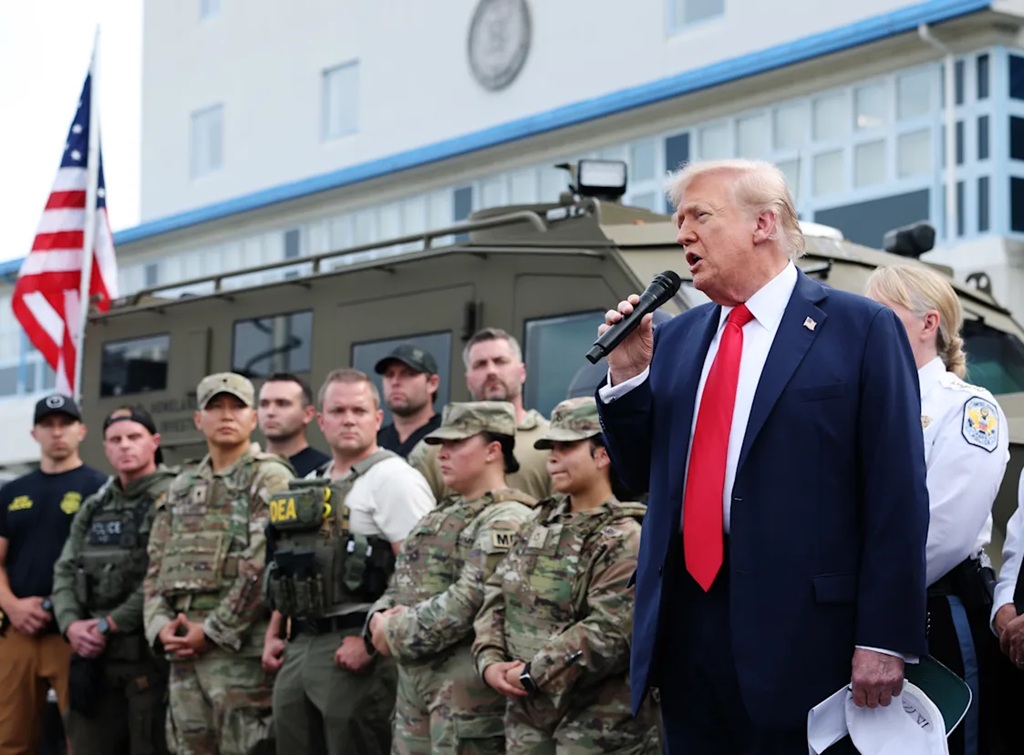
 News3 months ago
News3 months agoDemocrat Mayors Reject Trump’s Help as Crime Explodes in Blue Cities
-

 News3 months ago
News3 months agoBacklash Erupts Over Joy Reid’s Claim That Calling Elvis ‘The King’ Is Racist
-
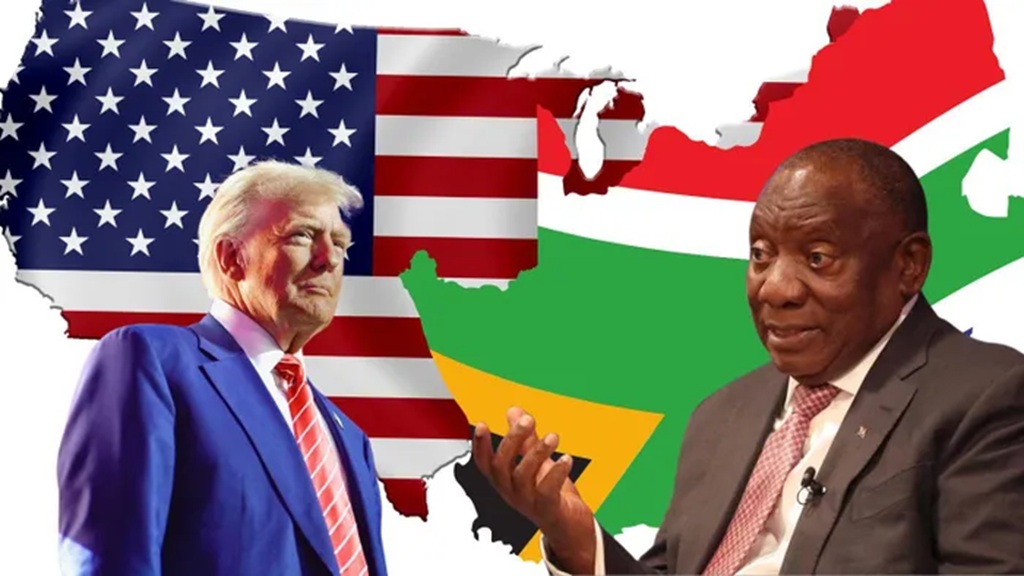
 News2 months ago
News2 months agoSouth Africa’s Audacious Bid to Teach America a Lesson
-

 Politics1 month ago
Politics1 month agoThe Democratic Party’s Leadership Vacuum Fuels Chaos and Exodus
-
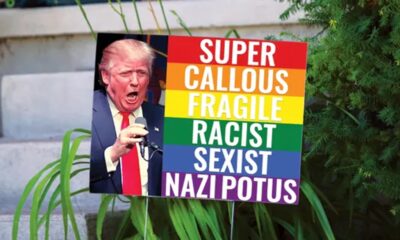
 Politics1 month ago
Politics1 month agoDemocrats Fascist and Nazi Rhetoric Just Isn’t Resognating With Voters














